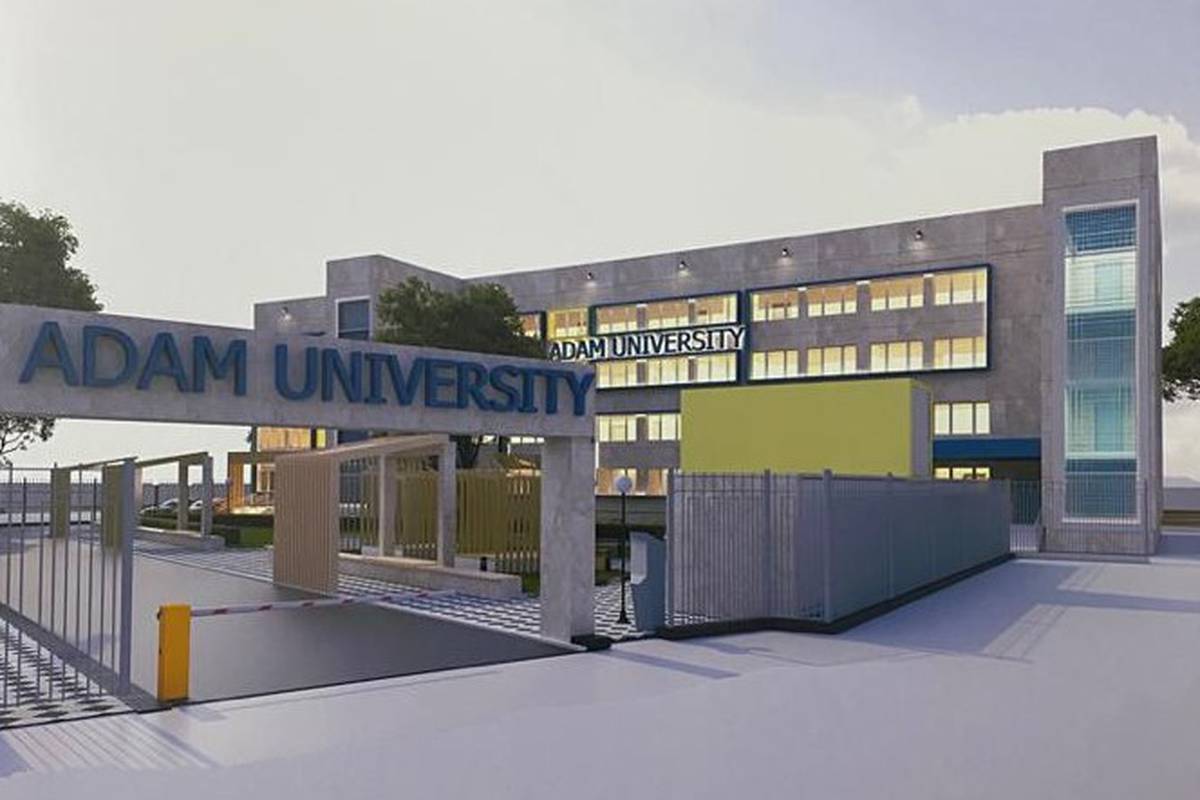
☝️ At a glance
- Affordable and globally recognized degrees with WHO, NMC, and ECFMG approval, ensuring worldwide career opportunities
- English-taught programs in most medical universities in Europe, making it accessible for international students
- Six-year MBBS course with early clinical training, providing hands-on medical experience
- No entrance exam required in many countries, with admission based on high school marks in Physics, Chemistry, and Biology
- Cost-effective medical education with lower tuition fees and affordable living expenses compared to India, the USA, and the UK
Introduction
MBBS in Europe is one of the most preferred choices for international students looking for high-quality medical education at an affordable cost. Many medical universities rank among the best in the world and provide state-of-the-art facilities, cutting-edge research opportunities, and globally recognized degrees. Studying MBBS in Europe allows students to gain hands-on experience through early clinical training, ensuring strong practical exposure.
There are a large number of medical european universities offering MBBS courses in English, making them highly accessible for Indian students and candidates from across the globe. The medium of instruction is English in most universities for MBBS in Europe, making it easier for international students to study MBBS in Europe without language barriers.
The MBBS course in Europe typically lasts 6 years, including pre-clinical and clinical training. Many top institutions, such as the Medical University Warsaw, National Medical University of Ukraine, and the University of Medicine and Pharmacy in Romania, provide world-class education. Tuition fees for MBBS in Europe are significantly lower compared to the USA, UK, and Australia, making it an attractive destination for MBBS study.
For Indian students, countries like Poland, Georgia, and Ukraine are among the top choices due to low tuition fees, high-quality education, and simple admission criteria. The cost of living in European countries is also affordable, making MBBS in Europe an excellent investment for a medical career.
Graduates from medical european universities can practice anywhere in the world, including India, after clearing the FMGE exam (now NExT). If you’re planning to study medicine in Europe, this guide covers everything from eligibility criteria for MBBS in Europe to career opportunities after graduation.

Become a global doctor with MBBS abroad!
Studying abroad can be affordable and stress-free with futureMBBS:
- World-recognized universities with English-taught programs
- On-site support in partner university cities
- Guaranteed placements & internships for hands-on experience
From selecting universities and supporting you with the application process to orientation and finding accommodation – we are at your side.
Why study MBBS in Europe?
Studying MBBS in Europe is one of the best choices for international students looking for high-quality medical education at an affordable cost. Many medical european universities are globally recognized, offer English-taught programs, and provide advanced clinical exposure. Here’s why MBBS in Europe is a preferred option for aspiring doctors:
1. Globally recognized medical degrees
The european medical universities are approved by major medical organizations such as:
World Health Organization (WHO)
National Medical Commission (NMC) India
Educational Commission for Foreign Medical Graduates (ECFMG) USA
General Medical Council (GMC) UK
Graduates from universities for MBBS in Europe have the flexibility to work anywhere in the world after fulfilling licensing requirements. Additionally, MBBS from Europe makes it easier for students to qualify for exams like USMLE (USA), PLAB (UK), and FMGE (India).
2. Affordable tuition fees
One of the most significant advantages of studying MBBS in Europe is its affordability. Compared to medical education in India, the USA, or the UK, tuition fees for MBBS in Europe are considerably lower. Some key benefits include:
Lower tuition fees in comparison to private medical universities in India
Availability of scholarships and grants for students
Affordable cost of living in European countries, making it a budget-friendly option
For example, MBBS in Poland, MBBS in Ukraine, and MBBS in Georgia offer low-cost education while maintaining high academic standards.
3. English-taught programs
Most european medical universities offer MBBS courses in English, eliminating language barriers for students. The medium of instruction is English, making it easier for Indian students and candidates from other non-European countries to study MBBS in Europe.
Even though the primary medium of instruction is English, students can also learn local languages, which helps them interact with patients during clinical training.
4. Advanced clinical training and state-of-the-art facilities

The european universities are equipped with state-of-the-art laboratories, simulation centers, and modern hospitals to ensure the best medical training. Students benefit from:
Early clinical exposure starting from the second year of MBBS course in Europe
Hands-on training in real hospitals affiliated with the medical universities
Access to advanced research facilities
For example, the Medical University of Warsaw and the National Medical University of Ukraine offer top-tier clinical training to prepare students for global medical careers.
5. No entrance exams in some countries
Unlike MBBS admission in India, where NEET is mandatory, several universities in Europe offer MBBS admission in Europe without requiring entrance exams. Some of the best MBBS universities in Europe accept students based on their academic performance in high school (Physics, Chemistry, and Biology).
This makes MBBS in Europe for Indian students an attractive option, especially for those who may not have secured a high NEET rank.
Best countries for MBBS in Europe
Studying MBBS in Europe is one of the best options for students seeking a globally recognized medical education at an affordable cost. Many universities in Europe rank among the world's best, offering advanced clinical training, state-of-the-art facilities, and English-taught programs. Below are some of the top countries to study MBBS in Europe, along with their leading universities and key highlights.
Country | Top universities | Key highlights |
|---|---|---|
Czech Republic | Charles University, Masaryk University | Global top 1.5%, advanced medical simulation training |
Hungary | Semmelweis University, University of Pécs | Top-ranked research universities with EU medical recognition |
Slovakia | Comenius University, Jessenius University | High-ranked universities in Europe, modern facilities |
Poland | Medical University of Poznan, Medical University of Lodz | Strong research focus, early clinical exposure |
Lithuania | University of Health Sciences Kaunas | Large teaching hospitals, international research collaborations |
Latvia | University of Latvia, Stradins University Riga | Integration with national healthcare system |
Romania | Medical University Cluj, Victor Babes University Timisoara | No entrance exam, multicultural learning environment |
Cyprus | University of Nicosia | Triple-recognized, internships in Switzerland |
Croatia | University of Split | Small-group learning, no entrance exam |
Each of these European countries offers high-quality medical education with globally recognized degrees, making them a great choice for Indian students and international students planning to pursue MBBS in Europe.
Country-wise MBBS in Europe overview
1. MBBS in Lithuania
Lithuania is one of the best destinations for students looking for affordable tuition fees for MBBS in Europe. The University of Health Sciences Kaunas offers:
Fully English-taught MBBS programs
International collaboration with 140+ universities worldwide
State-of-the-art clinical training at LSMU Kaunas University Hospital
The cost of living in Lithuania is lower than in many other European countries, making it a budget-friendly option for students.
2. MBBS in Hungary
Hungary has some of the top MBBS universities in Europe, including:
Semmelweis University, Hungary’s oldest medical university, training 4,000+ doctors annually
University of Pécs, ranked among the top 500 universities in the world
One of the best advantages of studying MBBS in Hungary is that it follows EU Directive 2005/36/EC, ensuring smooth career pathways across European countries for graduates.
3. MBBS in Slovakia
Slovakia is one of the most affordable destinations for MBBS admission in Europe. Its leading universities include:
Jessenius University, which offers cutting-edge medical research opportunities
Comenius University, ranked among the top 184 universities globally
The universities in Slovakia have a simple admission process, usually requiring an entrance test in Biology & Chemistry.

Study medicine abroad with 100% support!
futureMBBS offers full support to make your dream of studying medicine abroad a reality.
- Hassle-free admission guidance
- Fast-tracked visa processing
- Post-arrival support, including accommodation assistance
4. MBBS in Latvia
Latvia is an emerging destination for MBBS in Europe for Indian students. The top universities in Latvia are:
Stradins University Riga, offering hands-on clinical training through national healthcare integration
University of Latvia, ranked among the top 2.5% of universities worldwide
The universities in Latvia are recognized globally, ensuring career opportunities anywhere in the world.
5. MBBS in Cyprus
Cyprus offers a high standard of medical education in Europe. The University Nicosia, one of the best medical universities in Europe, provides:
Triple recognition (5 QS Stars, EADTU, EFQUEL)
Internships in Switzerland at Hirslanden Zurich Clinic
The medium of instruction is English, making it accessible for Indian students and other international students.
6. MBBS in Poland
Poland is one of the most popular destinations for MBBS. The top universities in Poland include:
Medical University Poznan
Medical University Lodz
These universities emphasize small-group learning to ensure personalized medical education and early clinical exposure.
7. MBBS in Croatia
Croatia is gaining popularity among students choosing to study MBBS in Europe. The University Split offers:
State-of-the-art medical training facilities
No entrance exam – admissions are based on academic & personal achievements
The cost of MBBS in Croatia is lower than in many other European countries, making it an attractive choice for students.
8. MBBS in Romania
Romania is one of the most affordable destinations for MBBS. Some of the top medical universities in Romania include:
Medical University Cluj
Victor Babes University Timisoara
One of the biggest advantages of studying MBBS in Romania is that there is no entrance exam. Admissions are based on academic merit, making it easier for Indians to secure a seat.
9. MBBS in the Czech Republic
The Czech Republic is home to some of the best medical university in Europe. Top universities include:
Charles University, ranked among the top 1.5% of global universities
Masaryk University, which has a world-class medical simulation center (SIMU)
These universities provide large-scale hospital exposure, allowing students to gain real-world clinical experience.
Eligibility criteria for MBBS in Europe

Pursuing an MBBS is an exciting opportunity for students worldwide, offering world-class education at affordable prices. European universities provide opportunities to study MBBS program in Europe in English, making them highly accessible to international students, including Indian students. Before applying, it's essential to understand the eligibility criteria, which may vary slightly depending on the university and the country.
1. Age requirement
The minimum age requirement for MBBS admission in Europe is generally 17 years at the time of admission. This ensures that students are mature enough to handle the rigorous nature of the MBBS course in Europe.
2. Educational qualifications
To study MBBS in Europe, candidates should have completed 10+2 or an equivalent examination with at least 50% marks in Physics, Chemistry, and Biology. These subjects are essential as they form the core foundation of the MBBS course.
3. Entrance exams
Some medical universities in Europe do not require NEET or any other entrance exams, which is a significant advantage for Indians. However, certain universities may have their internal entrance tests focusing on basic sciences like Biology, Chemistry, and Physics.
Countries like Poland, Slovakia, and Romania have simple admission procedures that do not require entrance exams, whereas universities in Hungary and Czech Republic might have some form of testing or interview.
4. English proficiency
Since most medical universities in Europe offer MBBS courses in English, students are often required to show proof of English proficiency. The most common tests accepted include:
IELTS (International English Language Testing System)
TOEFL (Test of English as a Foreign Language)
This ensures that students can successfully communicate during lectures, practicals, and clinical training, which is crucial in a medical program.
MBBS program in Europe: cost & scholarships
When considering studying MBBS program in Europe, tuition fees and living expenses are essential factors for students. However, Europe is known for providing quality education at relatively lower costs compared to countries like the USA, UK, or Australia.
1. Tuition fees for MBBS program in Europe
The tuition fees for MBBS program in Europe vary depending on the country and university. On average, tuition feesrange from ₹3.5 lakhs to ₹9 lakhs per year.
2. Hostel & food
The cost of living in Europe is relatively affordable. The annual expenses for hostel accommodation and foodtypically range from ₹2 lakhs to ₹5 lakhs per year, depending on the city and lifestyle.
3. Health insurance
Students studying MBBS program in Europe are required to have health insurance. The annual cost for health insurance generally ranges from ₹50,000 to ₹1 lakh.
4. Total cost per year
The total cost per year for studying MBBS program in Europe (including tuition fees, living expenses, and health insurance) is usually between ₹6 lakhs and ₹15 lakhs. This makes Europe one of the best destinations for those seeking high-quality education at a reasonable cost.
5. Scholarships for MBBS program in Europe
Several universities and organizations offer scholarships to international students pursuing MBBS program in Europe. Some of the notable scholarships include:
Erasmus+ Scholarship: A merit-based scholarship for students, covering tuition and living expenses.
Polish Government Scholarship: Special funding specifically designed for Indians.
Stipendium Hungaricum: A fully-funded scholarship for non-EU students pursuing medical courses in Hungary.
Charles University Scholarship: Based on academic excellence, this scholarship is offered by one of the best universities in Europe.
These scholarships help ease the financial burden on students, making studying MBBS program in Europe even more affordable.
Tuition fees breakdown for top universities in Europe

Below is a table with the tuition fees and total expenses for top medical universities in Europe, which will give you a clear idea of the financial commitment required for studying MBBS program in Europe.
University | Location | Annual Tuition Fee (INR) | Total Cost (INR) |
|---|---|---|---|
Charles University | Pilsen, Czech Republic | 7.20 Lacs | 86.40 Lacs |
Palacky University | Olomouc, Czech Republic | 5.69 Lacs | 68.28 Lacs |
Charles University | Prague, Czech Republic | 7.74 Lacs | 92.88 Lacs |
Jessenius University | Martin, Slovakia | 4.96 Lacs | 59.52 Lacs |
Comenius University | Bratislava, Slovakia | 5.00 Lacs | 60.00 Lacs |
UPJS | Kosice, Slovakia | 5.70 Lacs | 68.40 Lacs |
Semmelweis University | Budapest, Hungary | 8.29 Lacs | 99.50 Lacs |
Medical University Pécs | Pécs, Hungary | 6.74 Lacs | 80.88 Lacs |
Medical University Szeged | Szeged, Hungary | 7.20 Lacs | 86.40 Lacs |
University Latvia | Riga, Latvia | 5.59 Lacs | 67.00 Lacs |
Stradins University | Riga, Latvia | 5.69 Lacs | 68.28 Lacs |
University Health Sciences Kaunas | Kaunas, Lithuania | 5.77 Lacs | 69.22 Lacs |
University Nicosia | Nicosia, Cyprus | 9.11 Lacs | 1.10 Crore |
Victor Babes University | Timisoara, Romania | 3.65 Lacs | 43.80 Lacs |
Medical University Cluj Napoca | Cluj Napoca, Romania | 3.87 Lacs | 46.44 Lacs |
School of Medicine | Split, Croatia | 5.46 Lacs | 65.52 Lacs |
Medical University Poznan | Poznan, Poland | 7.11 Lacs | 85.32 Lacs |
Medical University Lodz | Lodz, Poland | 6.56 Lacs | 78.72 Lacs |
Masaryk University | Brno, Czech Republic | 6.83 Lacs | 81.96 Lacs |
Admission process for MBBS program in Europe
Pursuing MBBS program in Europe is a smooth process, but it is important to follow the correct steps to ensure a successful admission. Here’s a step-by-step guide to help you navigate the admission process.
Step 1: Shortlist universities
Start by researching and shortlisting universities that offer MBBS program in Europe. Consider key factors like:
University ranking: Choose a university with a strong global ranking in medicine.
Tuition fees: Ensure the tuition fees fit your budget.
Eligibility criteria: Check if you meet the university’s requirements.
Location: Choose a location based on your preferences for lifestyle and cost of living.
Step 2: Submit application
Once you've shortlisted your universities, it’s time to apply. The common documents required for application are:
10+2 Marksheet: Must show at least 50% marks in Physics, Chemistry, and Biology.
Passport: A valid passport with a minimum of 6 months validity.
NEET Scorecard (if required): Some universities may require NEET (National Eligibility cum Entrance Test) scores.
English Proficiency Certificate: Proof of English language proficiency through IELTS or TOEFL.
Step 3: Receive offer letter & apply for visa
After submitting your application, if you meet the university's criteria, you will receive an offer letter. Once you have this letter, you can apply for a student visa. Visit the European embassy in your country with the required documents to process your visa. Documents for visa application generally include:
Offer letter from the university.
Passport
Proof of funds to cover tuition and living expenses.
Health insurance: Health coverage is mandatory for students in most European countries.
Step 4: Travel & begin studies
Once your visa is approved, you can travel to your university. Attend the orientation session and begin your MBBS journey in Europe!
Ensure you have your documents organized to ensure a smooth admission and travel experience.
Student life and activities in top MBBS countries in Europe
Czech Republic
The Czech Republic is known for its rich history, stunning architecture, and vibrant cultural scene. Cities like Pragueand Brno are filled with charming cobblestone streets, grand castles, and ornate bridges. Czech culture is deeply rooted in traditions of music, literature, and art. The people are warm and welcoming, with a strong sense of pride in their history. The Czech Republic is famous for its beer, with a long-standing brewing tradition. Visitors can explore historic sites like the Prague Castle, stroll through picturesque squares, or enjoy traditional Czech food like svíčková (a creamy beef dish).
Hungary
Hungary offers a blend of Eastern and Western influences, with a rich history that spans centuries. Budapest, the capital, is often referred to as the “Paris of the East” for its stunning architecture, vibrant nightlife, and thermal baths. The Hungarian people are known for their hospitality and pride in their cultural heritage, which includes a love for music, dance, and food. Traditional Hungarian dishes, such as goulash and langos, are staples in local cuisine. Hungary’s countryside is equally beautiful, with charming towns and the tranquil Lake Balaton offering a peaceful retreat.
Slovakia
Slovakia is a country of natural beauty, from the towering Tatra Mountains to the vast forests and lakes. The people of Slovakia are friendly and proud of their traditions, often celebrating with folk music, dance, and festivals. The capital, Bratislava, is a charming city with medieval architecture, and the countryside is perfect for outdoor enthusiasts. Slovakia has a strong history of folk art, and visitors can experience it through traditional crafts, music, and food. Slovakian cuisine is hearty, with dishes like bryndzové halušky (potato dumplings with sheep cheese) representing the national taste.
Poland
Poland is a country that celebrates resilience and cultural pride. The cities of Warsaw, Krakow, and Gdansk boast a rich architectural heritage, from Gothic cathedrals to elegant palaces. The Polish people are known for their deep-rooted traditions, particularly in music, literature, and cuisine. Poland’s famous folk festivals, traditional dances, and vibrant art scenes make it a cultural hub. Visitors can enjoy hearty Polish meals like pierogi (dumplings) and bigos (hunter’s stew), while the scenic landscapes offer opportunities for hiking, skiing, and exploring picturesque towns.
Lithuania
Lithuania is a country steeped in ancient traditions and folklore. The capital, Vilnius, is a UNESCO World Heritage site, known for its stunning architecture and vibrant arts scene. The Lithuanian people are known for their love of music and dance, especially their traditional choral singing and folk dances. Lithuania's countryside is dotted with tranquil lakes and forests, offering a peaceful escape from the hustle and bustle of city life. The country is also famous for its pagan roots, and visitors can explore ancient rituals and sacred sites, making Lithuania a fascinating destination for cultural exploration.
Latvia
Latvia is a small Baltic country with a strong cultural identity and a rich history. Riga, the capital, is known for its beautiful Art Nouveau architecture and vibrant old town, while the Latvian countryside is famous for its unspoiled natural beauty. Latvians are proud of their folklore, and traditional songs and dances are an important part of the culture. The people are known for being friendly and reserved but always willing to share their traditions. Latvian cuisine features hearty dishes like grey peas with bacon and caraway cheese, and the country’s love for nature is evident in its many national parks and forests.
Romania
Romania offers a fascinating blend of history, legend, and natural beauty. The country is known for its medieval castles, including the famous Bran Castle, often associated with the Dracula legend. The Romanian people are known for their warmth and hospitality, and they take great pride in their cultural traditions, which include folk music, dance, and crafts. The countryside is dotted with picturesque villages, and the Carpathian Mountains offer opportunities for hiking, skiing, and wildlife spotting. Traditional Romanian food, such as sarmale (stuffed cabbage rolls) and mămăligă (cornmeal porridge), is a delicious reflection of the country’s heritage.
Cyprus
Cyprus is an island nation with a rich cultural heritage influenced by Greek, Turkish, and Middle Eastern traditions. The people of Cyprus are known for their hospitality and strong sense of community. The capital, Nicosia, is a blend of the modern and the ancient, while the coastal cities like Limassol and Paphos offer stunning beaches and ancient ruins. Cypriot cuisine is a delicious mix of Mediterranean flavors, with dishes like souvlaki and meze (small plates of food) being popular. Cyprus is also known for its vibrant festivals, including the Limassol Carnival and wine festivals.
Croatia
Croatia offers a diverse range of experiences, from its beautiful coastline along the Adriatic Sea to its charming inland villages. The Croatian people are known for their warmth, hospitality, and strong connection to their maritime heritage. Dubrovnik, with its medieval city walls, and Split, with its Roman ruins, are among the country’s most popular destinations. Croatian cuisine is influenced by Mediterranean flavors, with seafood, olive oil, and fresh vegetables taking center stage. The people of Croatia celebrate their cultural traditions through music, dance, and festivals, making it an exciting destination for those looking to experience authentic local life.
Job opportunities after MBBS program in Europe
Job Title | Description | Average Salary (INR per Month) |
|---|---|---|
Doctor/Physician | General medical practice in hospitals or private clinics. | ₹6,00,000 to ₹15,00,000 |
Medical Researcher | Conducts research in medical fields in universities, hospitals, or companies. | ₹4,50,000 to ₹9,00,000 |
Surgeon | Specializes in surgeries (neuro, orthopedic, cardiovascular, etc.). | ₹10,00,000 to ₹25,00,000 |
General Practitioner (GP) | First point of contact for patients; diagnosis and treatment. | ₹5,50,000 to ₹12,00,000 |
Medical Consultant | Provides expert advice to healthcare organizations, hospitals, and firms. | ₹8,00,000 to ₹20,00,000 |
Healthcare Administrator | Manages healthcare facilities and operations. | ₹7,00,000 to ₹16,00,000 |
Public Health Specialist | Works with governments or NGOs to improve healthcare systems and policies. | ₹6,00,000 to ₹12,00,000 |
Medical Educator/Professor | Teaches and educates future medical professionals at universities. | ₹8,00,000 to ₹15,00,000 |
Medical Tourism Consultant | Assists patients in finding treatment options and makes travel arrangements. | ₹4,50,000 to ₹10,00,000 |
Conclusion
Studying european MBBS program offers top-tier education, global career prospects, and affordable fees. With renowned universities and excellent research facilities, Europe is a prime destination for medical studies.
futureMBBS provides expert support throughout the process, offering:
Guaranteed Placement in Germany, Switzerland, and other European countries
Visa Assistance and Accommodation Support
On-Site Help and Exam Preparation
Assistance to over 1,000+ students
Get in touch today for seamless guidance in securing your MBBS admission in Europe!
Read more similar articles:
Your medical career abroad starts here!
Thinking of pursuing MBBS abroad? Don’t just dream it, do it!
Start your MBBS journey!
FREQUENTLY ASKED QUESTIONS
FAQs about “MBBS in Europe"
Which country is best for MBBS program Europe?
The Czech Republic, Hungary, Poland, and Ukraine are among the best for MBBS due to their top universities and high-quality medical education.
How much does it cost to do MBBS program Europe?
The tuition fees for MBBS program Europe range from 3.5 Lacs to 9 Lacs INR per year, depending on the university and country.
Is NEET required for MBBS program Europe?
NEET is not required for admission to many European universities, but it is necessary for practicing in India.
Is European MBBS valid in India?
Yes, MBBS from NMC-approved universities in Europe is valid in India, after passing the FMGE exam.
What is the duration of MBBS program Europe?
Most programs last 6 years (5 years study + 1-year internship).
Which country is the cheapest for MBBS program Europe?
Romania, Poland, and Latvia offer MBBS at affordable fees.
Can I work while studying MBBS program Europe?
Yes, international students can work part-time (20 hours/week).







